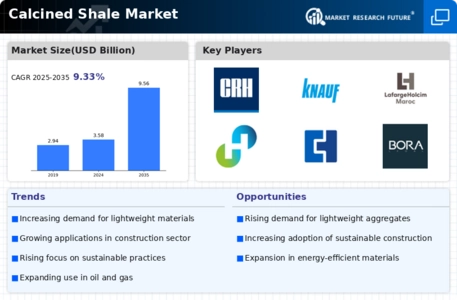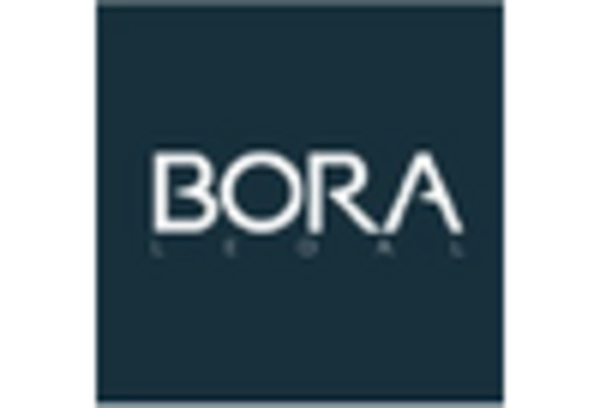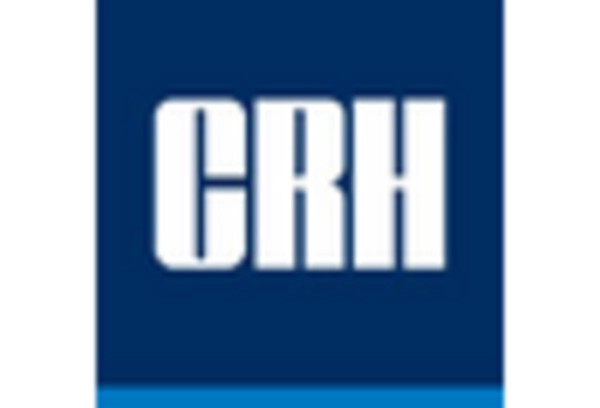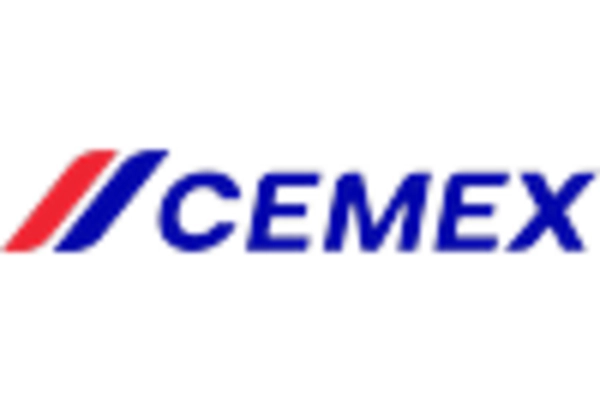Regulatory Support
Regulatory frameworks promoting the use of sustainable materials in construction are likely to bolster the Calcined Shale Market. Governments are increasingly implementing policies that encourage the adoption of eco-friendly materials, which can lead to enhanced market opportunities for calcined shale. For instance, regulations mandating the use of recycled and sustainable materials in public projects could drive demand for calcined shale as a viable alternative. In 2023, several countries introduced incentives for using sustainable construction materials, which may further stimulate the market. As regulatory support continues to evolve, the calcined shale sector could benefit from increased visibility and acceptance within the construction industry.
Technological Innovations
Technological advancements in the processing and application of calcined shale are likely to enhance its market appeal. Innovations in calcination techniques, such as improved energy efficiency and reduced emissions, could make the production of calcined shale more cost-effective. Additionally, the development of advanced materials that incorporate calcined shale is emerging, potentially expanding its applications in various industries. For instance, the integration of calcined shale in high-performance concrete formulations is gaining attention, as it can improve durability and reduce water permeability. The global construction industry, which is projected to reach USD 10 trillion by 2025, may increasingly adopt these innovations, thereby driving growth in the Calcined Shale Market.
Infrastructure Development
The ongoing infrastructure development initiatives across various regions are expected to serve as a significant catalyst for the Calcined Shale Market. Governments are investing heavily in infrastructure projects, including roads, bridges, and public buildings, which require durable and sustainable materials. Calcined shale, with its lightweight and insulating properties, is well-suited for such applications. In 2023, infrastructure spending was estimated to be around USD 4 trillion, and this trend is anticipated to continue, creating a robust demand for calcined shale. As countries prioritize modernization and expansion of their infrastructure, the market for calcined shale is likely to experience substantial growth.
Sustainability Initiatives
The increasing emphasis on sustainability within the construction and manufacturing sectors appears to be a pivotal driver for the Calcined Shale Market. As industries strive to reduce their carbon footprints, calcined shale, known for its eco-friendly properties, is gaining traction. This material is often utilized in the production of lightweight aggregates, which can significantly lower the weight of concrete, thereby enhancing energy efficiency in construction. Furthermore, the global push towards sustainable building practices is likely to bolster demand for calcined shale, as it aligns with the principles of green construction. In 2023, the market for sustainable construction materials was valued at approximately USD 300 billion, indicating a robust growth trajectory that could positively influence the calcined shale sector.
Diverse Application Potential
The versatility of calcined shale in various applications is a notable driver for the Calcined Shale Market. This material is not only utilized in construction but also finds use in agriculture, ceramics, and even as a lightweight filler in plastics. The expanding range of applications suggests a growing market potential. For example, in agriculture, calcined shale is being explored as a soil amendment to improve drainage and nutrient retention. The ceramics industry is also recognizing the benefits of calcined shale in producing high-quality ceramic products. As industries continue to discover innovative uses for calcined shale, the market is likely to expand, reflecting its diverse application potential.


















Leave a Comment